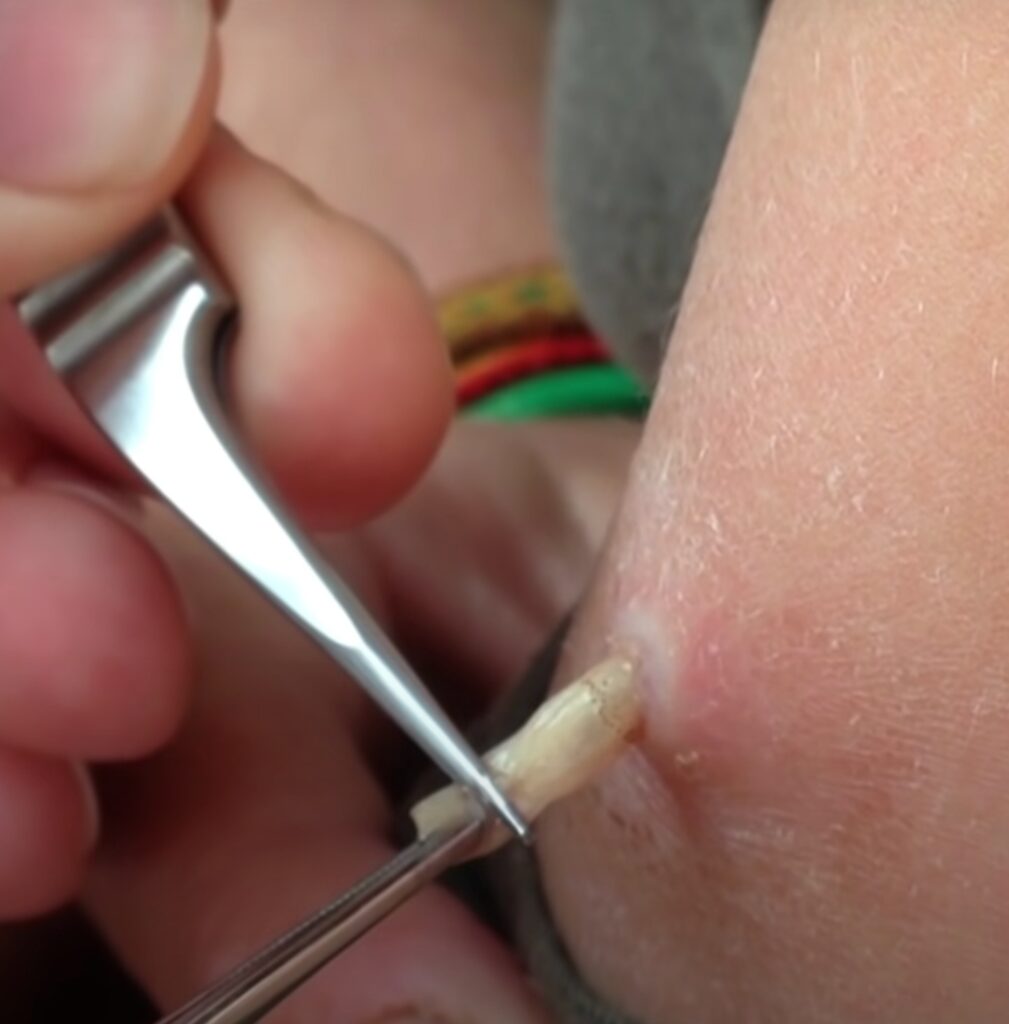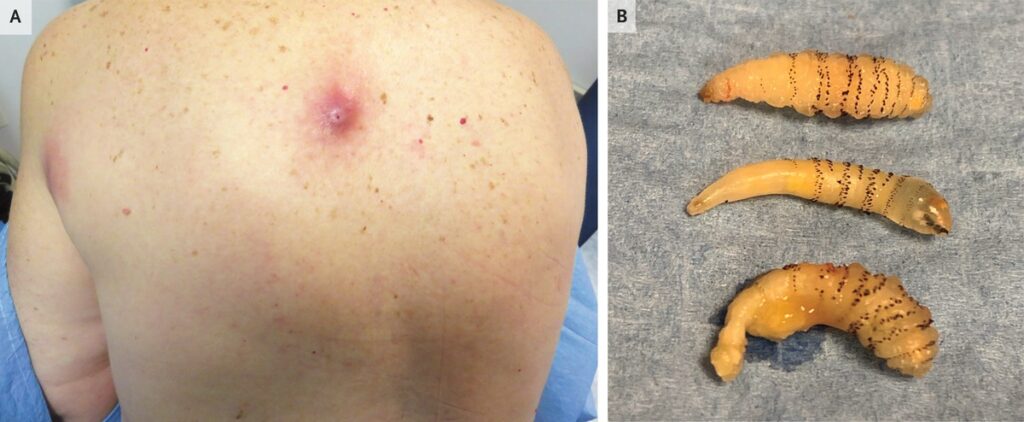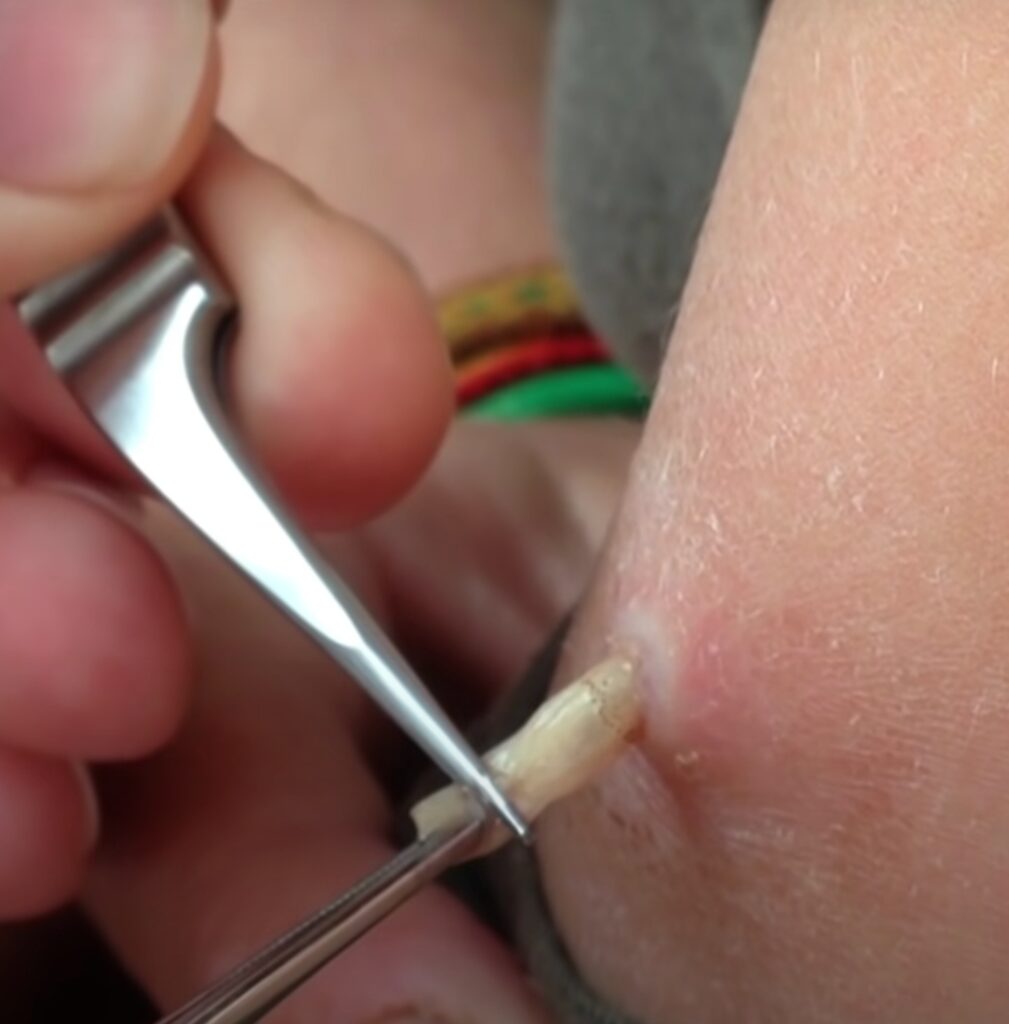If you’ve ever heard the phrase “botfly,” your first reaction might have been a mix of fascination and discomfort. Botflies are parasitic insects that lay their eggs on mammals, including humans, causing an uncomfortable sensation. In this post, we’ll look at the world of botflies, their life cycle, and botfly elimination methods.

Understanding the Botfly: A Brief Overview
Botflies, formally known as Oestridae, are a type of fly that may be found all over the world. These flies are distinct due to their parasitic activity as larvae. Botflies, unlike many insects that deposit eggs directly on a host, have evolved a distinct strategy.
Female botflies lay their eggs on the skin or hair of their hosts, which can range from livestock to pets to humans in rare situations. The eggs hatch when they come into contact with the warmth of the host’s body, and the larvae burrow into the skin to begin their growth.

The Botfly Life Cycle: From Eggs to Larvae
The botfly life cycle is both interesting and terrifying. It goes through four stages: eggs, larvae, pupae, and adults.
Female botflies are skilled at attaching their eggs to the fur or skin of their hosts. The host’s body heat causes the eggs to hatch, producing small larvae that swiftly seek refuge within the skin.
Larvae: Once within the host’s skin, the larvae make a small aperture to breathe and feed on tissue fluids. Because of their existence and activity beneath the epidermis, the larvae continue to grow while causing discomfort to the host.
Pupae: The mature larvae emerge from the host’s skin after several weeks of development. They fall to the ground and burrow into the dirt to pupate. The pupal stage is a period of rest during which the larva develops into an adult botfly.
Adult botflies emerge from the pupa once the transition is complete. The adult period is brief and focuses on reproduction. The cycle is restarted when female botflies lay their eggs on suitable hosts.
Botfly Removal Methods: How to Deal with Uninvited Guests
Dealing with botfly larvae can be unpleasant and, in some situations, dangerous. Here are some botfly elimination methods:
Surgical Extraction: Surgical removal is a typical approach for people and pets to extract larvae. A medical specialist delicately creates an incision above the breathing hole of the larvae and extracts it. To avoid infection, proper medical care is essential.
Suffocation Technique: Applying petroleum jelly or adhesive tape over the larva’s breathing hole can suffocate it in some situations. This method induces the larva to emerge from the skin in search of air, making removal easier.
Natural Expulsion: The body will occasionally react naturally to the presence of the larva, causing it to depart the skin on its own. However, this procedure can be time-consuming and unpleasant.
Vet Assistance: To remove botfly larvae from pets and cattle, veterinarians frequently use techniques akin to surgical extraction. Medications may also be prescribed by veterinarians to relieve pain and prevent infection.
Botfly Infestations: How to Keep Unwanted Visitors Away
Botfly infestations must be avoided to avoid the discomfort and health hazards associated with their larvae. Here are some precautions you can take:
Grooming pets and cattle on a regular basis can help prevent botflies from laying eggs on their skin or fur.
Wearing protective gear such as long sleeves and pants when spending time outside in botfly-prone locations can lower the possibilities of egg deposition.
Insect Repellents: Using insect repellents, particularly ones designed to repel botflies, can add an added layer of defense.
Environmental Management: Clearing garbage and keeping the surroundings clean can help limit the number of botflies.
Botflies are fascinating because of their unique life cycle, but their parasitic nature is not always welcome by hosts. Understanding botflies, their life cycle, and removal and preventative strategies is essential for reducing the irritation and health hazards connected with these pests. If you have a botfly infestation, get professional help.





